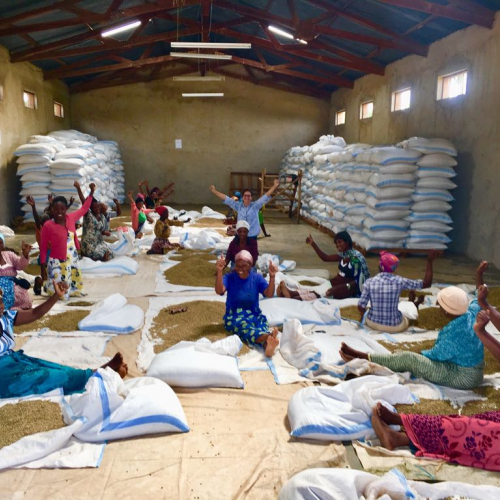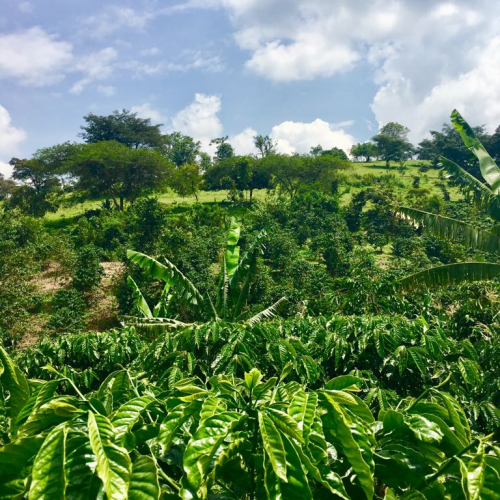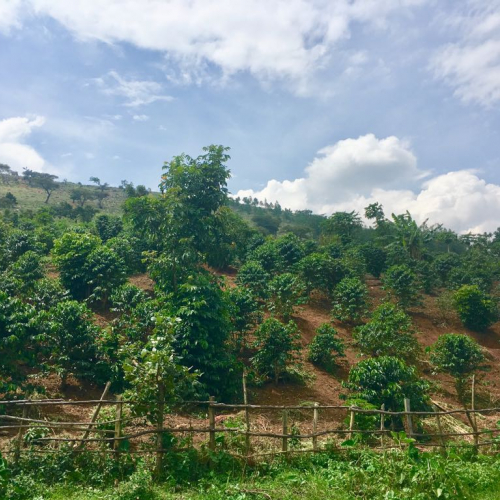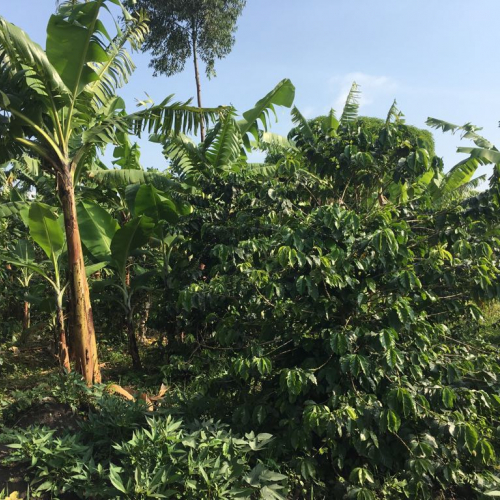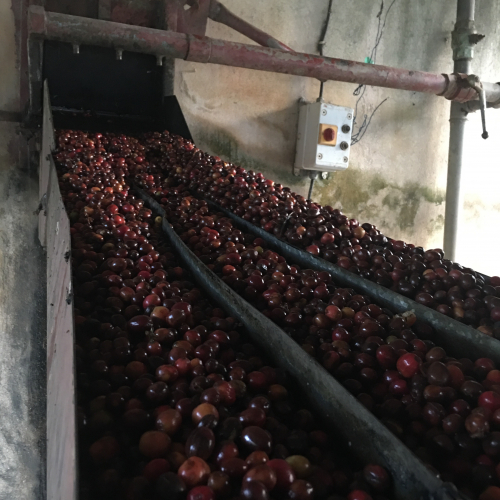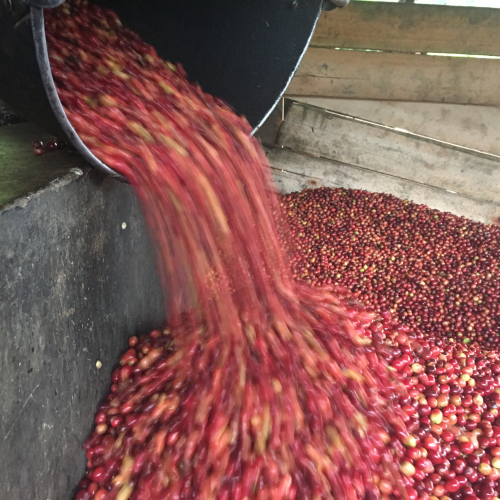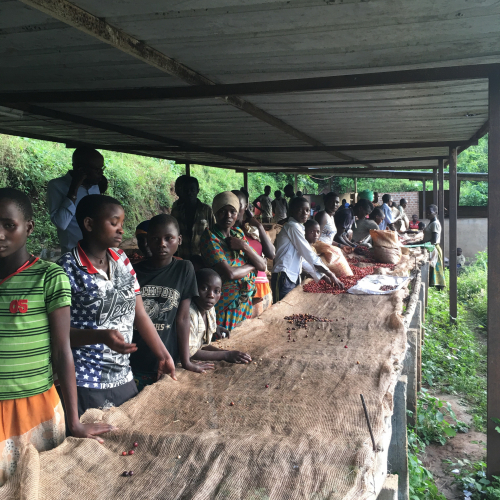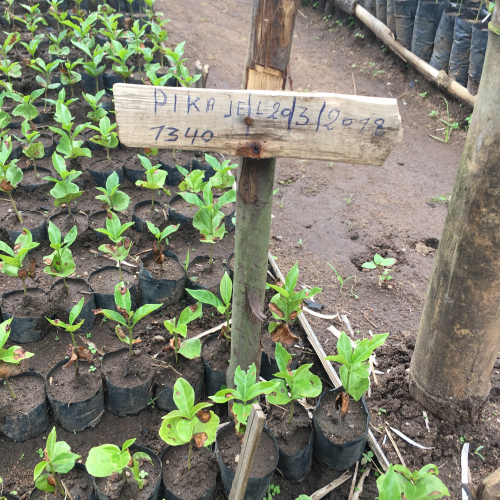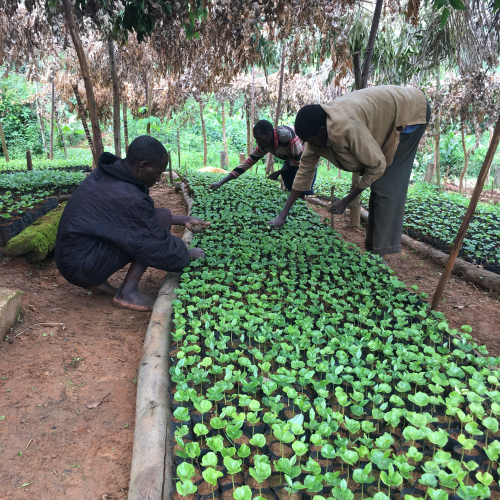Uganda
Did you know?
About
A landlocked country in East Africa, Uganda consists of a Savannah plateau with mountains and lakes. It includes part of lake Victoria from which the Nile flows north-wards to Sudan. The climate is warm and humid.
Most people live in the southern half of the country. Agriculture dominates the economy. Coffee is the main export, followed by cotton and tea.
Both Arabica and Robusta
Uganda grows both major types of coffee, Arabica and Robusta. Eighty percent of the production however is Robusta. Arabica coffee is grown at altitudes of 1300-2300 metres above sea level either along the Kenyan border (Bugishu) or in the western montainous regions (Wugar). Robusta coffee grows at an altitude of 900-1500 metres in a radius around Lake Victoria as well as in the western regions.
Coffee facts
Crop Periods
Flowering Period |
|
Main : From January until December (1) |
(1) About Flowering
Flowering occurs practically all year round, depending on the altitude and rainfall.
Harvesting Period |
|
Main : From January until December (1) |
(1) About Harvesting
Robusta harvest : practically all year round, peaks from October to February.
Arabica harvest : from September to February
Shipping Period |
|
Main : From November until September (1) |
(1) About Shipping
Robusta : First shipment in January/February.
Arabica : Shipment spread troughout the year.
Transit Days
|
Port of Shipment |
Imp. |
EU |
US |
|
Mombasa (1) |
90% |
21 |
46 |
|
Dar-Es-Salaam |
10% |
26 |
47 |
(1) About Mombasa
Kampala, due to its central location, is the regional hub for transport via Mombasa. The 200 kms of road between Kampala and the Kenyan border are done under intense traffic, very often over potholes and unpaved pieces, trucks race next to intersection local markets where villagers jump next to every slowing down vehicle trying to sell everything from soda, to bananas, to living poultry.
Countries of Export
1.Spain
2.Soudan
3.UK, France, Germany, Hungary, Italy, Slovenia, Switzerland, The Netherlands
Coffee is Uganda's leading foreign exchange earner, accounting for nearly 65 per cent of all export earnings and is the major source of income for many Ugandans. Although its relative importance is decreasing due to the export diversification policy, coffee is and will remain for some time a major source of foreign exchange earnings in Uganda. The Sudanese market is a fast growing (neighbourging) export market. It accounts for at least 10% of the robusta crop.
Nice to know
Flowering and harvesting throughout the year depending on the region.
The arabica production is about 25% of the crop.
Arabica coffee is sourced direct from the farmers while robusta still has lot of middleman in between.
Farmers don’t use fertilizers because of the cost, reason why they can get organic certification easily by default. Yields are really low about 60 to 65% meaning production of 0.6 Kg of parchment per tree.
All the dry mills are located in Kampala. Washing stations built just in Paidha and Sipi regions. Mainly the wet process is done by farmers at the farm.
ICO Figures
Classifications
Varieties
Cafea Canephora (Robusta) around Masaka, Luwero, Kiboga and Mukono (Central region)
SL14 for Arabica
By region
Only in Arabica, regional distinctions are made:
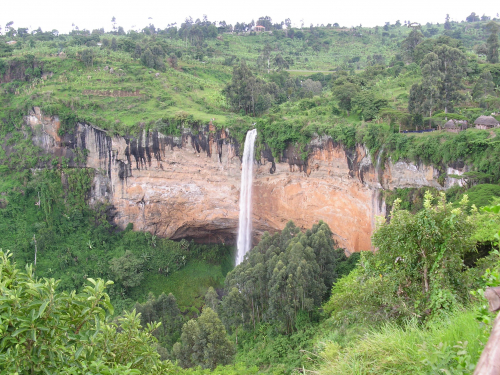
Arabica grows mostly on the high slopes of Mount Elgon - to the East (the Sipi region), close to the Kenyan border - the Bugisu coffee;
and to the West alongside the mountain border with Congo, home to the Drugar and Wugar coffees.
By Grade
Arabica
|
|
Natural : Screen 18 |
min. 92% milled above 18, max. 1% milled below 12 |
|
Standard : screen 17 |
min. 90% milled above 17, max. 2% milled below 12 |
|
Screen 14 |
max. 5% milled above 15, max. 10% milled below 12 |
|
Screen 12 |
max. 13% milled above 15, max. 2% milled below 12 |
|
B.H.P. |
type 1199 : sorting left-overs and small fragments usable |
Cupprofile
The Drugar is the most common arabica, natural, sun-dried typically on the patios’ floors by farmers themselves and then brought to small scale dry mills for hulling. The Drugar is characterised by strong winey cup. Of the various contradictory explanations, the common elements was that poor drying, leading to some extent of fermentation enables this cup profile.
Defects
Dry processed natural Robusta
|
Typical Description
Uganda Robusta screen 12
Processing
|
Picking |
selectively by hand |
|
Washing |
Dry (for Robusta) and wet (for Arabica) method are used |
|
Fermentation |
Arabica: 12-36 hours |
|
Drying |
In the sun on the ground or on stagings. |
|
Sorting |
mechanical & electronic |
(1) About Washing
Today almost all Robusta is sold as natural - that is, dry processed, except for very small amounts which are washed. A major program has recently started to promote production of washed Robusta. Among the arabicas the Wugar and Bugisu variety is fully washed and the Drugar is dry-processed.
Coffee Environment
Coffee Environment
In 1991 the government of Uganda liberalised the entire coffee sub-sector in order to maximise the volume and unit value of export. This was done through the scrapping of the external marketing monopoly of the Coffee Marketing Board (CMB); and the establishment of the Uganda Coffee Development Authority (UCDA) in 1991. The UCDA took over the regulatory and supervisory role of the entire coffee industry, while the marketing was totally liberalised. Private companies exist parallel to co-operative involvement. Growers, buyers, processors, and exporters are free to contract as they please.
Uganda's coffee producers comprise about one million smallholders. The smallholdings vary in size, and the average smallholding is about 0.3 hectares.

